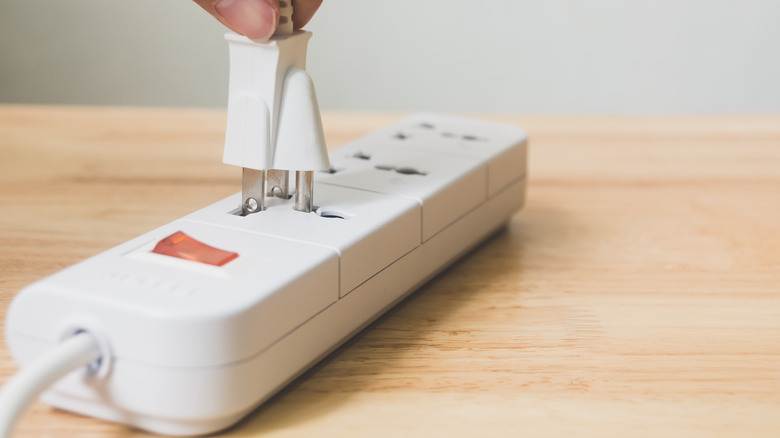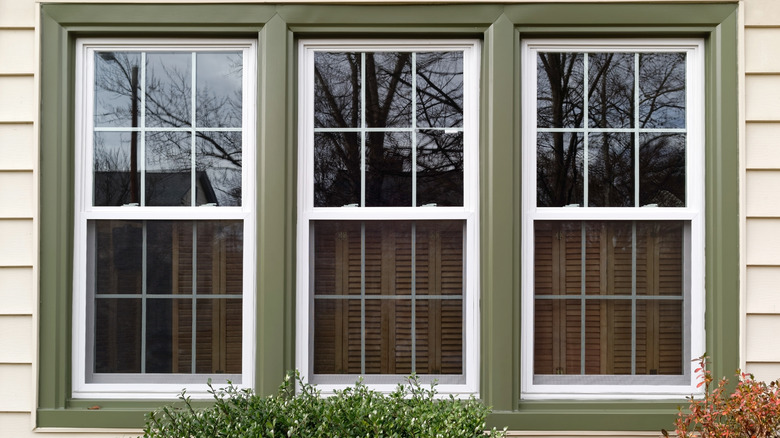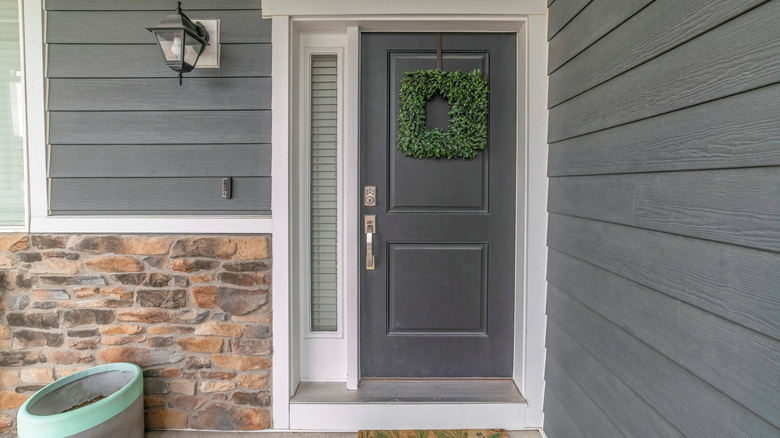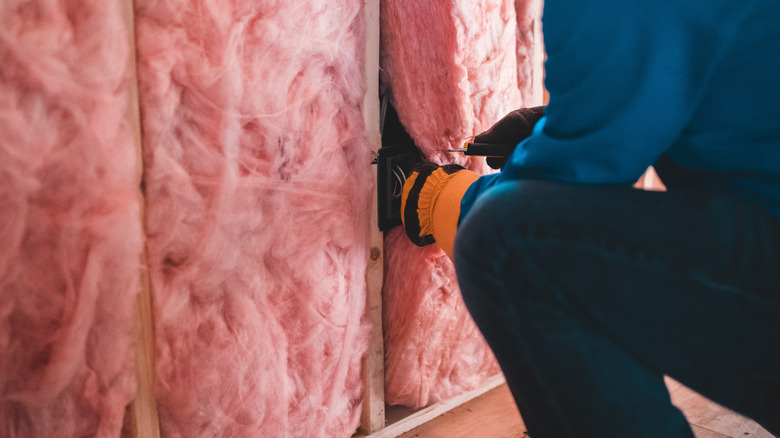Green Project Upgrades You Can Do To Keep Your Home Sustainable
Are you fed up with utility bills on the rise? Perhaps you want to update your home to make it more sustainable and help protect the planet. Whatever your reason for making the changes, green projects can transform your place into an oasis of peace and tranquility. Often, tiny updates will gradually improve the energy efficiency in your house. Besides saving money, these minor touches will positively impact the environment and your overall health. Ultimately, green finishes will increase the value of your property if you decide to sell it in the future. According to a report from the U.S. Green Building Council, the interest in green and energy-efficient homes is constantly rising. LEED-certified homes are tending and have jumped by 19 percent since 2017. Moreover, greener properties sell more quickly and at higher prices.
So, how do you start introducing environmentally friendly touches? Will you have to take on significant construction and renovation projects? Many homeowners may get overwhelmed by the available options and statistics. Others may be demotivated due to high investment costs and give up the green fixes. However, there are endless little upgrades that conserve water and electricity, reduce household waste, and promote your well-being. Above all, you can aim to create a better living space that appeals to your senses. As you explore your options, here are several ideas to inspire your next green update and make your home more energy efficient.
Prioritize energy-efficient bulbs
While this tip may seem obvious, it will dramatically impact your monthly electric bill. Switching to eco-friendly lighting across the entire property will likely save you hundreds of dollars a year. Plus, it is a good starting point for your intention to make the household greener. Replacing old bulbs is a straightforward way to transition to eco-friendly living. According to Top 10 Consultants, incandescent lights and CFLs harm our health and the environment. Due to the mercury (heavy metal) content, CFLs are major pollutants when disposed of in landfills.
Conversely, LED lights don't contain toxins and are more durable than traditional bulbs. They use 90 percent less energy and may last 100,000 hours (via Blogging Junction). Plus, the emitted light is high-quality and naturally directional. While the upfront costs can quickly add up, installing LED lights is a wise investment in the long term. Typically, you pocket about $100 per year by replacing the five most used light bulbs at home.
Ditch inefficient appliances
Whether you're remodeling or an old model stopped working, shopping for new appliances can be challenging. What should you focus on to make the best pick? To be on the safe side, consider the selling price and the cost of operating the device during its lifetime. Typically, older appliances are inefficient and thus waste your time and money. Newer alternatives cut down the electricity required for operation and work faster. They can also reduce greenhouse emissions and fight global warming, per Residence Style. Consider replacing everything from irons and furnaces to dishwashers and fridges. Investing in sustainable models will lower overall energy consumption and improve your quality of life.
Look for the ENERGY STAR® label because these models exceed the minimum federal requirements for efficiency and quality (via United States Department of Energy). To do so, read the Energy Guide Label on the appliance when shopping and learn about its features. Checking the attached black and yellow label will help you ensure the items run at a low operating cost.
Install an energy-efficient HVAC and smart thermostats
The HVAC system makes the most of your household energy consumption. In addition to investing in energy-efficient appliances, upgrading your heating, ventilation, and air conditioning is even more critical. Combined with advanced thermostats, these upgrades can result in a sustainable house design. The best approach is to install the HVAC system when designing your house. This way, you can divide the place into zones for heating and cooling at specific times. You can easily control the overall temperature and use less energy. Even if you install a new system, you can save between 20 and 40 percent in energy costs, per AC Contractors.
Once you complete the HVAC project, swap out the old thermostat for a modern one. A smart thermostat will adjust the heating and cooling system to avoid excess work. The upfront investment runs from about $130 to $300, but it will soon pay off (via Home Security Store). Pricier models offer advanced features, such as geofencing and remote voice control activation.
Monitor your outlet socket use
Think about how many cords you leave plugged in every day. Appliances like your fridge probably need to operate 24/7, but what about the TV, electric toothbrushes, computers, and phones? Do they also have to be constantly charging and consuming energy? Certainly not. When not in use, plugged gadgets use phantom energy. While this it's usually a small amount, it adds up if you consider all busy outlet sockets together. Northeast Power estimates they can waste between 4 and 12 percent of the total household energy. The average cost to run household components turned off is about $70 per year.
Unplugging every appliance at home can be tricky. Yet, there are some things you can do to cut the energy bill. For example, use automatic power strips and outlets (via Eartheasy). These let you set timetables and turn your appliances off at specific times. Another method for eliminating phantom loads is switching off all lights, even small LED ones, glowing in the house. Similarly, don't forget to unplug fully charged electronic devices.
Don't let the heat escape
Another convenient method that cuts energy usage involves keeping the heat inside. But how can you achieve this without breaking the bank? Thoroughly review all possible air leakages and open cracks in the house. Once you locate these outlets, proceed to close them.
Sealing the gaps in the attic, foundation, or walls will keep your home warmer in the winter and cooler in the summer. The US Department of Energy suggests using two techniques known as caulking and weather-stripping. Besides being highly effective, these air-sealing processes offer a quick return on investment. For simple fixes, use a caulk gun. As for movable components like windows and doors, get weather-stripping attachments to eliminate drafts.
If closing cracks doesn't help, consider replacing outdated, leaky windows. Go for energy-efficient models from companies that offer rebates. From Cislo Siding's experience, vinyl replacement windows eliminate exposure to harmful substances and enhance your safety. You will also maximize functionality because new models slide up and down and tilt inward and outward.
Invest in a reliable front door
In addition to upgrading your windows, a next-generation front door will reduce your annual heating and cooling expenses. To this end, ensure you choose an Energy Star-certified model. Thanks to the energy-efficient materials on these doors, they provide extra insulation for your home. Conversely, improperly insulated exterior doors reduce comfort, allow drafts, and waste your money. Energy Star recommends models with double or triple-paned insulating glass to avoid this scenario. The space between the panes should contain air or gases that boost the door's insulation. The less energy you spend, the greener you live.
Pick a door made of fiberglass, steel, or wood cladding with polyurethane foam core. Energy-efficient materials have a tighter fit and improved weather-stripping (via HomeAdvancement). On top of that, fiberglass and steel don't shrink and swell in extreme temperatures. Since they're durable and modern-looking, they will also help improve your curb appeal.
Insulate your place the eco-friendly way
Proper insulation is critical for a sustainable home design. If you're planning to make a few green upgrades, give well-insulated walls some thought. Besides keeping the place energy efficient, you'll invest in a healthier home for you and your family. Insulation traditionally made from polystyrene and fiberglass (known as glass wool) comes from a resource-depleting production process, per Tiny Eco Home Life. Manufacturing these materials can use up to ten times more energy than eco-friendly alternatives. Plus, they contain irritants and potentially hazardous fibers. On the other hand, natural materials are 100 percent safe and leave a lower carbon footprint.
To choose the best insulation for your home and the planet, pick natural products like sheep wool, cellulose, cork, cotton, and glass mineral wool. These materials are ideal for floor, wall, and roof insulation. Moreover, they are recyclable, reusable, hypoallergenic, and offer excellent acoustic insulation.
Reduce water usage
Are your taps outdated and dripping? Do you still take long hot baths? Perhaps your water heater uses so much energy that your bills have skyrocketed again. If these scenarios seem familiar, think again because ordinary habits can make your money go down the drain. Federal authorities have introduced new standards on fixtures like toilets, showerheads, and sinks to help citizens reduce their water bills. To this end, Chicago Faucets claims that installing a single WaterSense showerhead can save your household $70 per year. Moreover, quick upgrades, including repairing leaks in the plumbing lines, will help reduce waste water.
Upgrading your old water heater for an energy-efficient model without tanks is a wise move, too. Alternatively, get a solar water heater. It's estimated that this investment can save you between 50 and 80 percent of the water-heating cost (via SolarReviews). Besides being less challenging to install than solar roof panels, water heaters will also boost your home's value.
Put rainwater to use
Besides saving water inside your home, you can also make incredible green upgrades on the outside. For example, you can create a rain garden to spruce up the backyard or harvest rain drops in storage tanks for car washing, toilet flushing, or general house cleaning.
One technique you can try involves collecting rainwater from the roof and driveway and letting it soak into the ground. However, you will need to install diverter pipes that lead excess water to storage containers, points out Tista's Home. As a result, you can prevent runoff and waterway pollution. Plus, this green upgrade means less landscaping on your behalf and more free time and money to enjoy. You might also decide to install a rain barrel to harness natural water for your lawn and plants (via Seametrics). The tank will automatically collect rainwater from the gutters or another source and store it for further use.
Go green with eco-friendly flooring
Have you ever thought about making your flooring greener? You probably haven't. Most homeowners do not relate flooring to sustainability and typically pick the least expensive variant. Surprisingly, there are many modern solutions for your home, including affordable eco-friendly flooring. Sustainable wood floors use fewer raw materials, which means less energy and natural resources.
According to Floorsave, oak, pine, and cork are the best materials because they are durable and manufactured with moral responsibility toward the planet. Bamboo is another excellent pick kind to the environment because it grows fast and in abundance. It is also water-resistant, low-maintenance, and easy to install. You can also consider natural linoleum flooring made of all-natural, renewable materials. Thanks to advances in modern finishes, current variants can last over 40 years (via Forbes). Alternatively, go with natural stone, like limestone, sandstone, or slate. Besides being incredibly durable and recyclable, stone is available in almost unlimited supply.
Consider recycled paint
If not every year, you probably refresh the walls in your home every once in a while. Next time you are redoing the interior, choose eco-friendly paint. The production process has a lower environmental impact and this paint also minimizes the carbon footprint. Creating an eco-friendly home does not have to be complicated, time-consuming, or costly. You only need to make minor adjustments when refreshing the walls.
The best paint options on the market today include odorless products without toxins. According to EcoFriend, air-purifying and energy-producing paints are unique choices with a bright future. For instance, insulation paint reflects and blocks radiant heat and saves energy. The product can also insulate sound and resist corrosion, mold, and mildew. If you have leftover paint, donate or recycle it. Companies like Recolor Paints collect unused paint destined to pollute landfills and give it new life. They set up drop points, collect unused products, and then filter and hand-mix them to create beautiful recycled paints.
Opt for reusable materials
No home can become sustainable without a little upcycling. Typical projects include repurposing broken vases as planters and old tires as flower beds. Similarly, you can transform outdated furniture into fabulous decor pieces or decorate with nature. Make your home greener by intensifying your upcycling efforts. For example, consider finding excess building materials at a home improvement store or a contractor.
Leftovers around your home can also come in handy for remodeling projects. Constrofacilitator claims that reusing scrap lumber, bricks, concrete, steel, and other building materials has multifold benefits for our planet. This approach reduces construction waste, cuts the demand for new resources, and relieves the pressure of producing and transporting new materials. Another thing you can do for sustainable interior decor is repurposing outdoor finds. Use mossy branches or driftwood to decorate your mantel (via Ambience Design Group). Similarly, make pressed flowers to place in vases. Unique outdoor treasures include pinecones, seashells, and beautiful stones.
Invest in recycling and composting bins
Just consider how much waste you produce daily and that most of this can get recycled if not selected wrongly. Therefore, getting recycling bins should be your top priority for a greener home. In addition, buy a composting bin to make your household even more eco-friendly. Above all, ensure you recycle paper, glass, and plastic bottles. While this might sound clichéd, recycling benefits the economy, the planet, and your wallet. Plus, it conserves energy and cuts down on landfill use. According to The New Ecologist, recycling is 194 times more effective in lowering pollution and reducing greenhouse gases.
Next comes the compost bin. This item will help you turn leftovers and organic waste into fertilizer. For the ultimate result, keep the moisture level satisfactory by adding layers of green and brown materials (via Help Me Compost). Browns are dry materials like shredded newspaper and egg cartons, while greens include fruit and vegetables and coffee grounds. Also, remember to rotate the pile regularly to keep it aerated and efficiently decomposing.
Look into green walls and roofs
Novel sustainable home designs require homeowners to think outside the box. An ideal feature for anyone striving to design a green home is living roofs and walls. You may wonder what these are. In short, living surfaces contain a water-retaining layer that enables various flowers, grasses, and shrubs to thrive. Green roof benefits go far beyond financial motivation. They are highly energy-efficient and an eco-friendly alternative that insulates your home naturally.
According to Green Roof Guide, living surfaces increase the roof life expectancy by protecting the roof from extreme weather exposure and also reduce air and noise pollution by absorbing sound. In addition, having a green roof will also improve biodiversity by providing a habitat for wildlife and improve drainage by delaying runoff. Moreover, heat gain and loss figures exceed the performance of other roofing materials and thus boost property value. Likewise, introducing living walls inside the house can make it more energy-efficient and aesthetically pleasing. These solutions enrich the interior space and act as air purifiers (via Greenwalls by Botanical Designs).
Get creative with your lawn
While grass seems like a straightforward option, it's water-intensive, high-maintenance, and allergenic. So, if you're trying to cut down on your grass-maintenance costs without sacrificing the luscious green landscape, there is a way out. A few alternatives are easier on your wallet, health, and the environment. The most sustainable options include moss beds, clover, sedum plants, creeping thyme, chamomile, and Corsican mint, per Gilmour. Similarly, you can go with an eco-lawn with wood chippings and gravel.
Your climate and landscape will determine your ground cover. If everything else fails, create a mini wildflower meadow by letting native plants and flowers take over. Don't forget to plant trees around your home. The larger your garden, the more trees you should grow. This way, you provide more shade in the future, which means lower energy bills. On top of that, a little orchard can offer you mouthwatering fruits.















